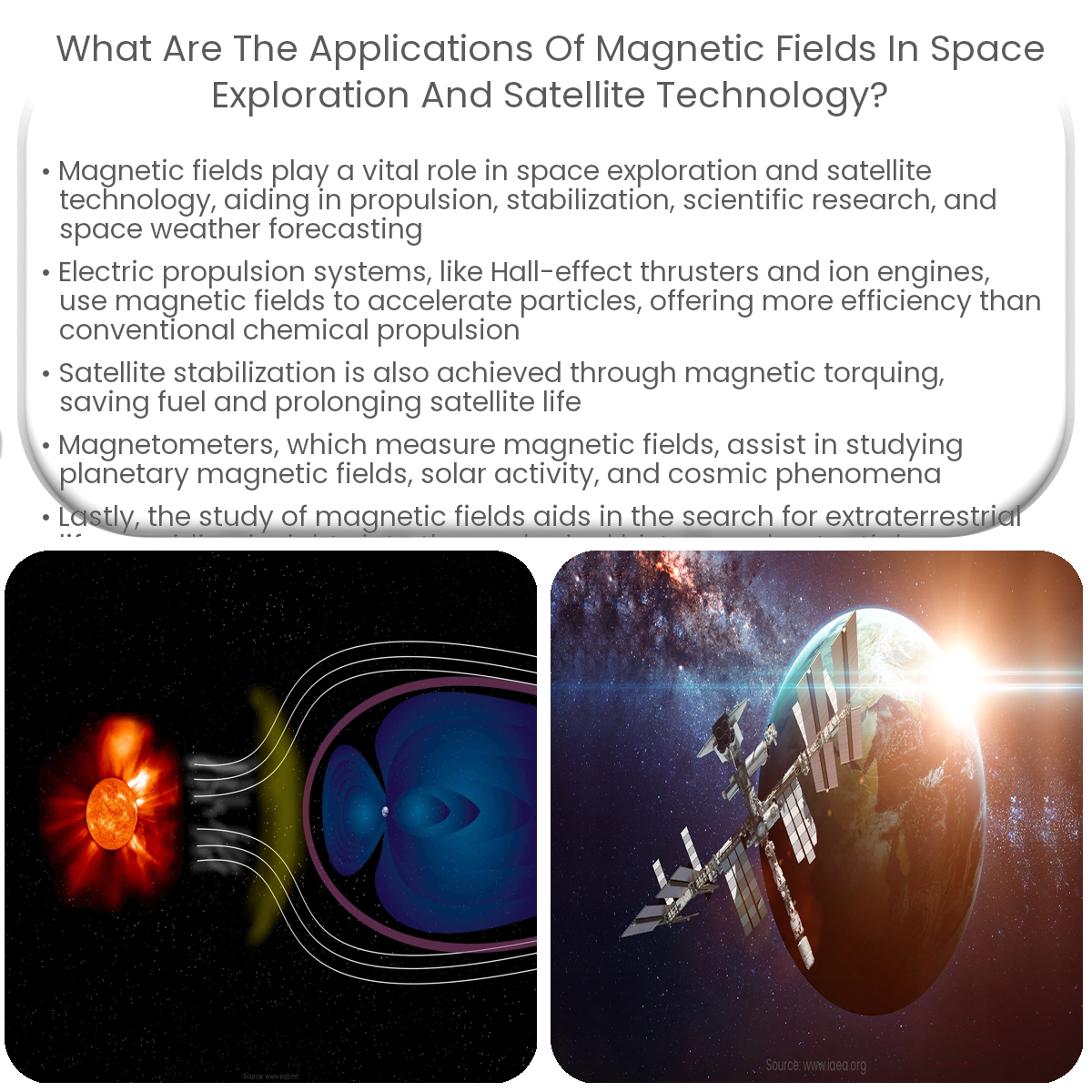Magnetic fields are used in satellite propulsion, stabilization, space research, space weather forecasting, spacecraft navigation, and planetary studies.
Applications of Magnetic Fields in Space Exploration and Satellite Technology
Magnetic fields play a crucial role in the advancement of space exploration and satellite technology. They are employed in various applications, ranging from satellite propulsion systems to scientific studies of celestial objects and phenomena.
Satellite Propulsion and Stabilization
One major application of magnetic fields in satellite technology is the use of electric propulsion systems, such as Hall-effect thrusters and ion engines. These systems rely on magnetic fields to accelerate charged particles, generating thrust to propel satellites in space with greater efficiency than traditional chemical propulsion.
Magnetic fields also help in satellite stabilization by interacting with Earth’s magnetic field. This method, known as magnetic torquing, allows satellite orientation adjustments without using fuel, extending the operational life of the satellite.
Magnetometers and Space Research
Magnetometers, devices that measure magnetic fields, are essential instruments in space exploration. They enable the study of planetary magnetic fields, solar activity, and cosmic magnetic phenomena. These instruments are used to investigate the Earth’s magnetosphere, monitor solar flares, and analyze the interplanetary magnetic field.
Space Weather Forecasting
Magnetic fields are an essential aspect of space weather, which impacts satellites, communication systems, and power grids on Earth. By monitoring magnetic fields in space, scientists can better understand and predict space weather events, such as geomagnetic storms and solar flares, helping to mitigate their effects on technology and infrastructure.
Spacecraft Navigation and Docking
Magnetic fields are also used in spacecraft navigation systems, as well as docking and rendezvous procedures. By generating controlled magnetic fields, spacecraft can attract or repel each other, allowing for precise and fuel-efficient maneuvers during docking or proximity operations.
Search for Extraterrestrial Life and Planetary Studies
The study of magnetic fields in space exploration extends to the search for extraterrestrial life and the investigation of planetary environments. Analyzing the magnetic fields of planets and moons can provide insights into their geological history, potential habitability, and the presence of subsurface oceans, which may harbor life.
In summary, magnetic fields have a broad range of applications in space exploration and satellite technology, from propulsion and stabilization to scientific research and space weather forecasting. As our understanding of magnetic fields grows, their role in advancing space exploration and technology will continue to expand.


